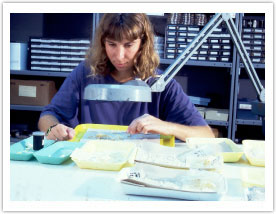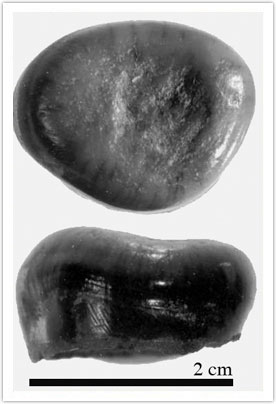Center of Excellence
Zoology Research Sub-Group
Projects - Fish remains
 |
| Irit Zohar sorting the fish bones at the zooarchaeology lab |
The study of fish remains from Gesher Benot Ya‘aqov focuses on paleoecological and taphonomical aspects and includes the following:
- Identification of the fish remains to the lowest taxonomic level and comparison with skeletons prepared from modern fauna collected from the Jordan Rift Valley, Lake Hula, and the Sea of Galilee (Figure 2). The aquatic habitats along the Jordan River 790,000 years ago may have hosted fish communities different from those of the present, and some of these species may be presently extinct. Consequently, the taxonomic identification of these species is being performed in comparison with various osteological collections of fish from Turkey, Syria, Lebanon, Egypt and Africa, which are housed in various museums (e.g., NHM London, Brussels, etc.).
-
 |
| Figure 2: Colection of fish in Lake Hula |
Species diversity (Brillouin Index) and richness (S) will be compared within different lacustrine deposits at the site. Since freshwater fish are sensitive to changes in water salinity and temperature level, changes in species diversity and richness may imply paleoenvironmental changes.
- The taphonomical study includes comparison between fish bone frequencies, as well as state of preservation, in different taxa, lacustrine deposits, and archaeological areas, layers and levels.
-
 |
| Figure 3: Large molariform teeth dorsal and lateral view |
The issue of the natural vs. cultural origin of the deposited fish will be examined by using a large set of quantitative and qualitative variables.
Some preliminary highlights:
Three families of freshwater fish were identified at GBY and include Cyprinidae (carps), Cichlidae (Tilapinii) and Clariidae (catfish). Among the Cyprinidae, remains of a large Barbus sp., consisting mainly of large molariform teeth, were recovered (Figures 3). Since these teeth differ significantly in shape from those of the modern species, they belonged to an extinct and unidentified species of a fish of the genus Barbus. This fish is assumed to have been more than one meter in length and may thus have substantially contributed to the diet of the hominins of GBY.
|